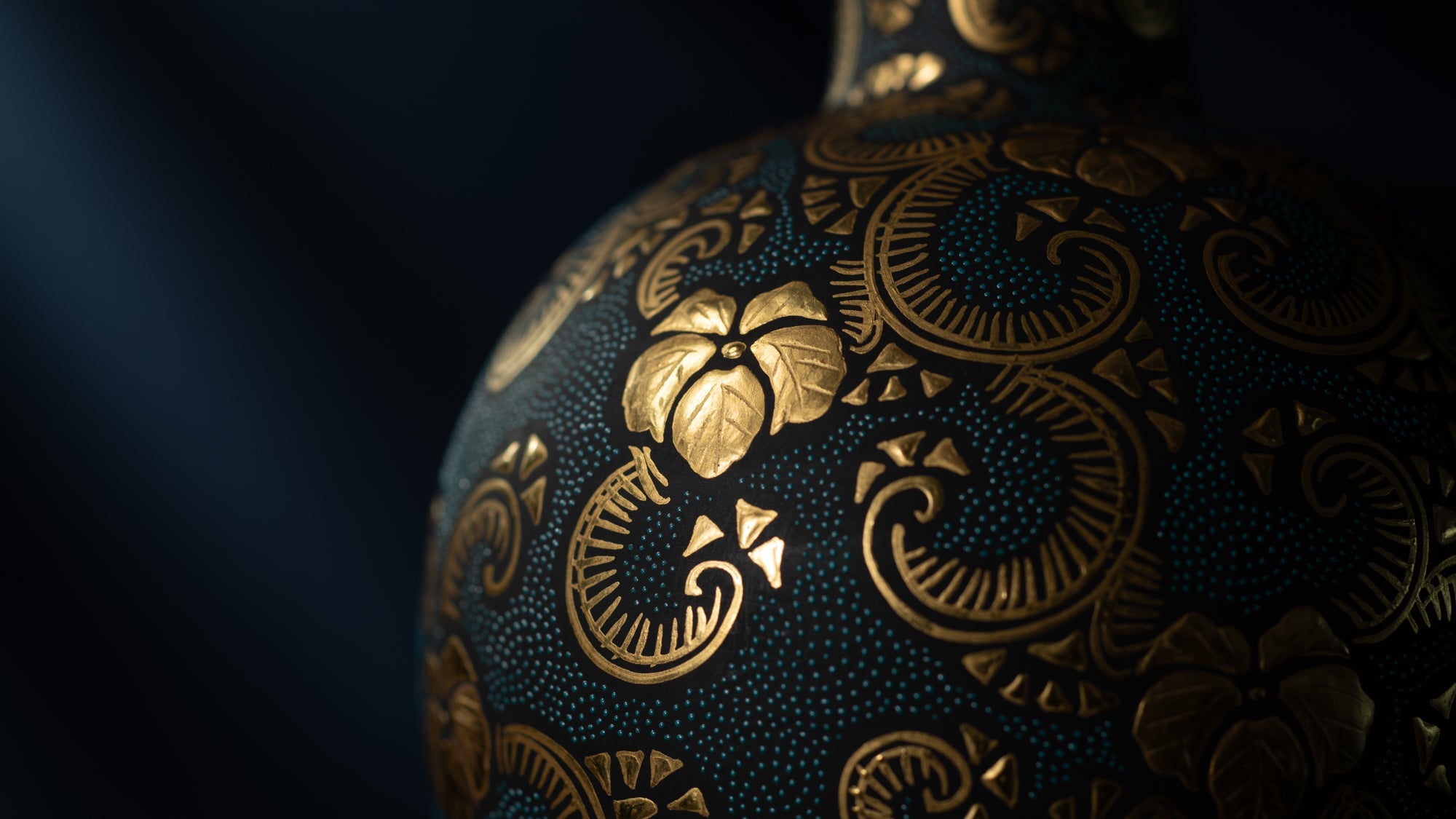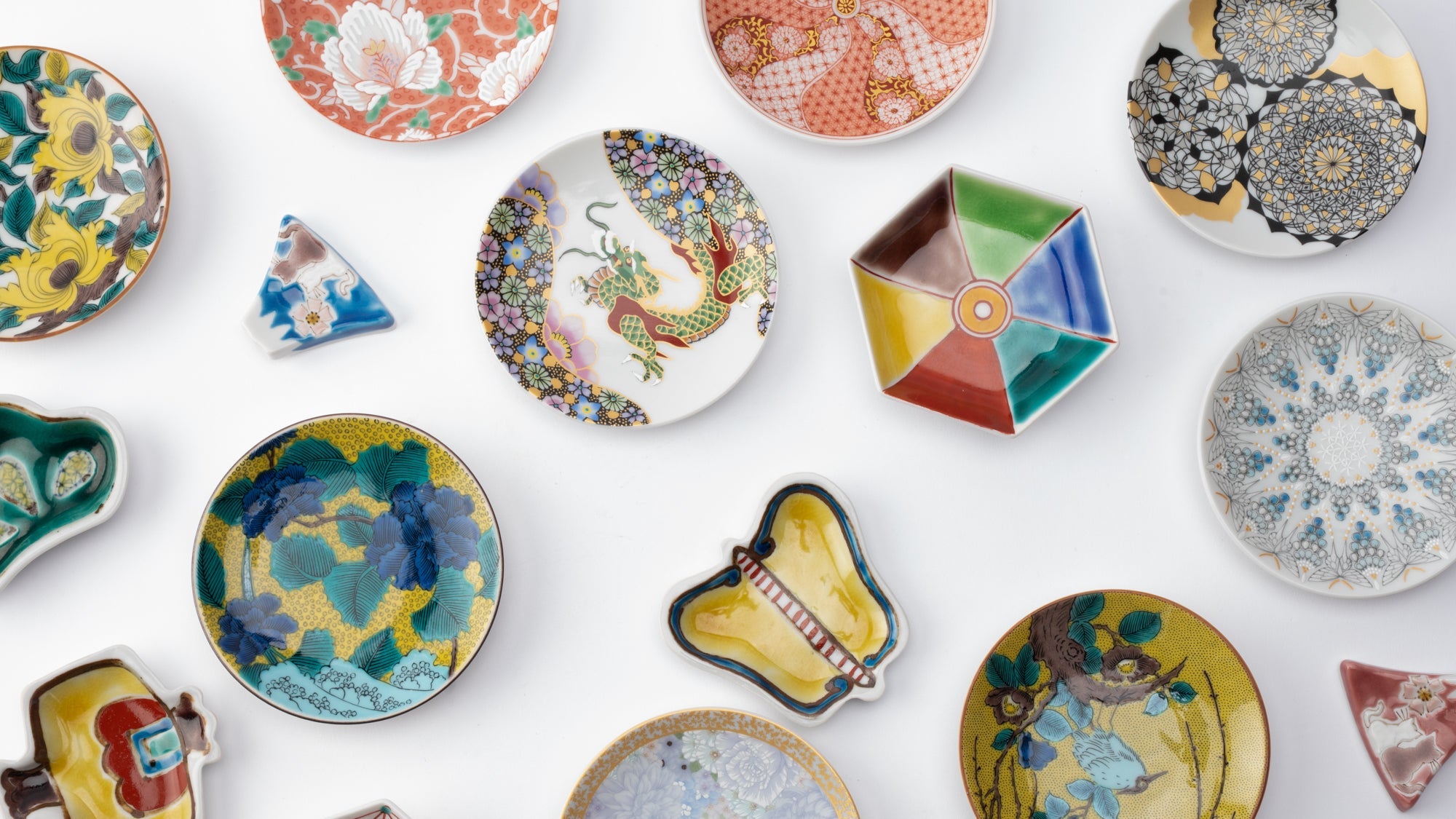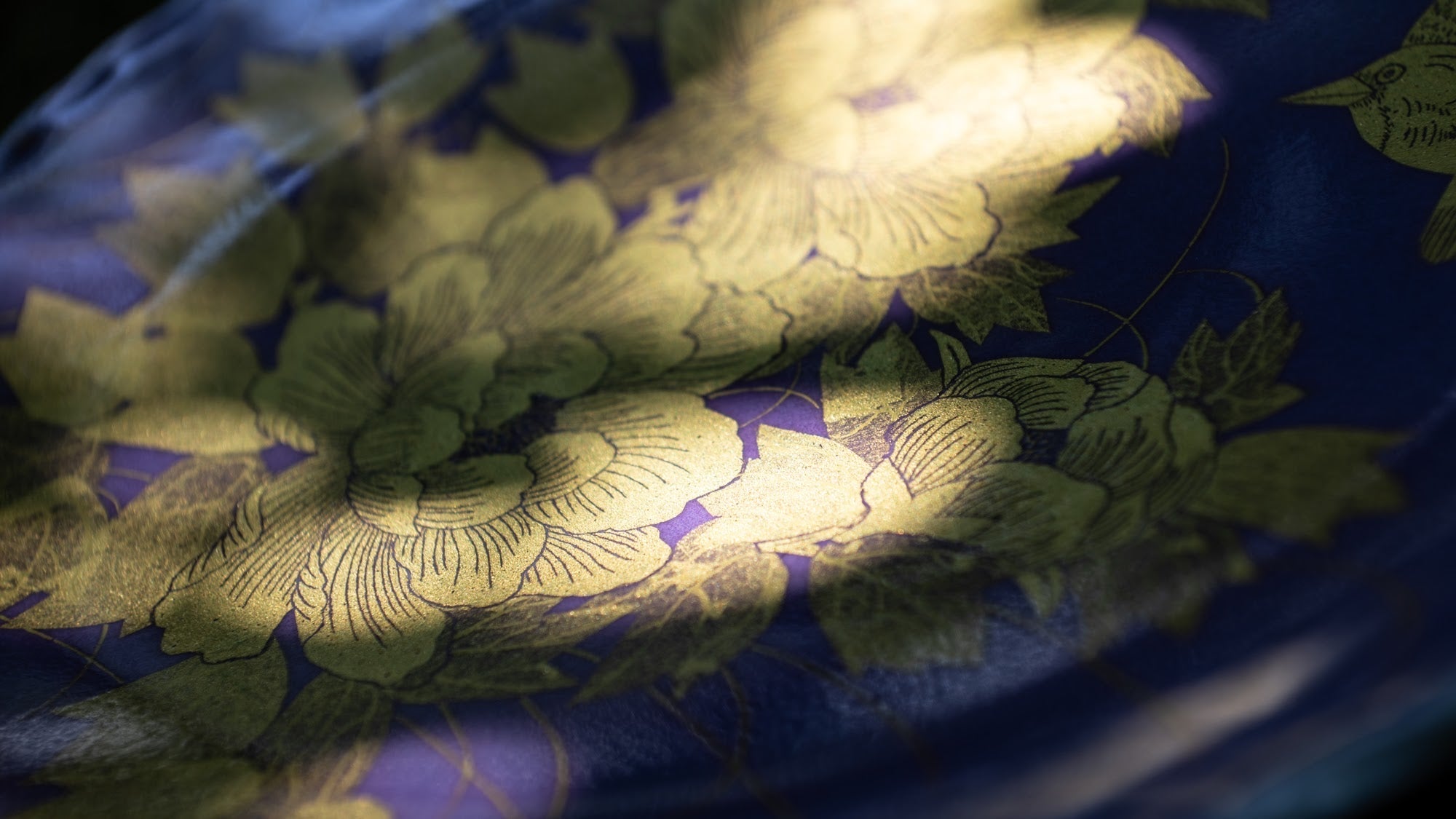


























Black Morikin Grape Pattern Aochibu Lucky Cat
The Black Morikin Grape Pattern Aochibu Lucky Cat expertly combines the aochibu "blue dots" and morikin "raised gold" techniques. This exquisite piece captivates with its intricate design, featuring a black base color that serves as a canvas for the mesmerizing blue dot swirl pattern, which is applied with perfect precision.
The elegant black foundation not only enriches the overall design but also provides a luxurious backdrop that makes the platinum and gold leaves of the grape pattern stand out with extravagant contrast, offering a contemporary twist on the timeless elegance of Kutani ware.
This charming lucky cat is brought to life with delicate brushwork that captures its endearing expression and the fine details of its ornamental collar. A small bell accent adds a playful, lively touch, enhancing its warmth and personality.
The black lucky cat is revered in Japan for its protective power, believed to ward off evil and misfortune. The maneki neko became popular during the Edo period (1603–1868 CE), with various legends associating black cats with protection and prosperity. In Kyoto, in particular, black maneki neko have long been seen as symbols of business success and guardians against misfortune.
DETAILS
| Quantity | 1 figurine, 1 wooden stand, 1 wooden plaque |
| Size |
D 11.0 cm (4.3 in) x W 15.0 cm (5.9 in) x H 16.5 cm (6.5 in) [Wooden stand] L 14.5 cm (5.7 in) x W 20.5 cm (8.1 in) x H 2.0 cm (0.8 in) [Wooden box] L 17.5 cm (6.9 in) x W 17.5 cm (6.9 in) x H 21.0 cm (8.3 in) |
| Weight |
[Figurine] 470 g (16.6 oz) [Wooden stand] 400 g (14.1 oz) |
| Material | Porcelain |
| Package Type | Wooden box |
Maker / Brand
Nakada Kingyoku's work embodies Rimpa Artistry with its dignified elegance and graceful beauty. He harmonizes the interplay between space and miniature craftsmanship, combining modern sensibilities with meticulous techniques through the artistry of blue dots and raised gold. His work not only pays homage to his inherited heritage but also introduces innovations to elevate the aochibu style.

Crafts
Kutani ware is a pottery produced in the Kaga region of Ishikawa Prefecture, with a history spanning over 350 years. It is characterized by the heavy brilliance of the five colors of navy blue, red, purple, green, and yellow that are applied to the bold and daring lines. Its long history has evolved through the tireless efforts and enthusiasm of people who have sought innovation while maintaining tradition.

Choose options
About Artist
Musubi Gallery
Since its inception, MUSUBI KILN has strived to introduce the world to the finest traditional crafts from masters all around Japan.
Here, in the Gallery, we seek to showcase the highest echelon of traditional techniques passed down through generations. You can discover works from masters who have not only perfected those methods, but added their imagination to innovate the craft even further.
Some of these masters have even been named Living National Treasures, a title bestowed upon them by the Japanese government to formally recognize their contribution to crafts and culture — thereby cementing their legacy and making them an important part of art history.
Each piece is meticulously handcrafted over many months to create a timeless treasure that's unlike any other. And when it's in your home, you, too, will become part of that history.
Welcome to the Gallery. Please, peruse at your leisure.


